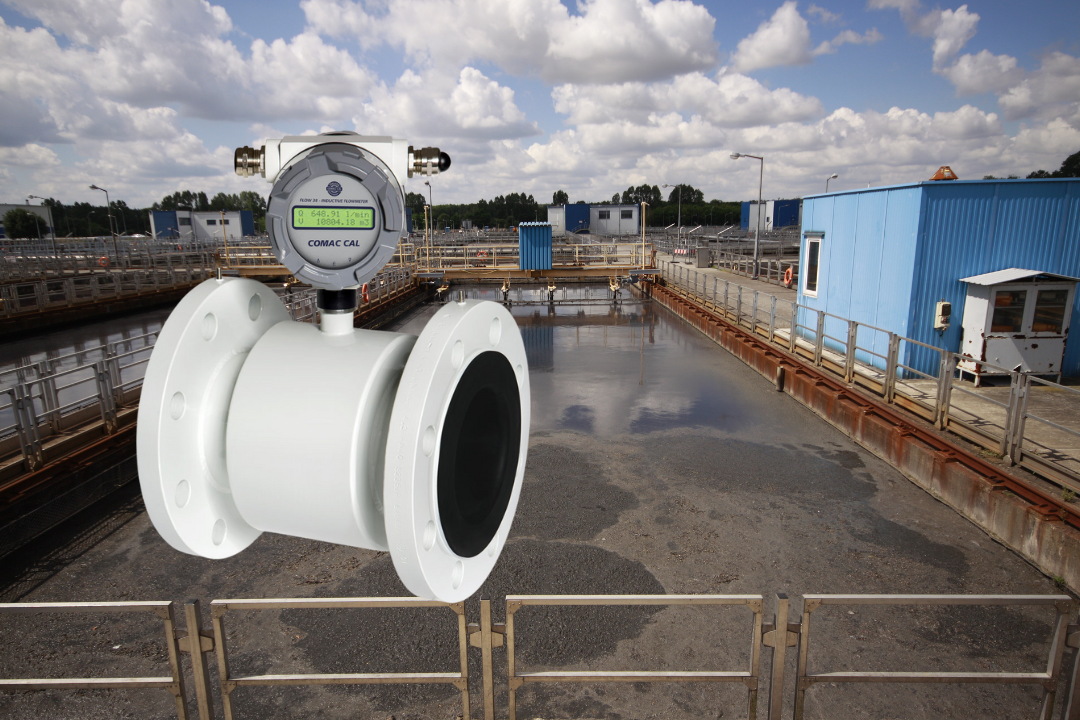
Measuring Flow Rate of Sewage Sludge in a Treatment Plant
seztec.us2024-08-26T21:57:46+01:00Sewage sludge, a byproduct of wastewater treatment processes, is a complex mixture of water, organic and inorganic matter, and microorganisms. Managing this sludge effectively is critical to the overall efficiency and environmental compliance of a wastewater treatment plant. One of the key aspects of sludge management is accurately measuring its flow rate. This measurement is essential for process control, resource optimization, and ensuring that the treatment plant operates within regulatory limits. In this article, we explore the challenges of measuring the flow rate of sewage sludge and the technologies best suited for this task.
The Importance of Accurate Flow Measurement
In a wastewater treatment plant, sewage sludge undergoes various processes, including thickening, digestion, dewatering, and disposal. Each of these stages requires precise control of the sludge flow to ensure optimal treatment and to avoid issues such as overloading or underfeeding downstream processes. Accurate flow measurement is also essential for:
- Process Optimization: Controlling the flow rate helps optimize chemical dosing, energy usage, and the overall efficiency of sludge treatment processes.
- Regulatory Compliance: Monitoring sludge flow is necessary to meet environmental regulations regarding sludge disposal and reuse.
- Operational Efficiency: Reliable flow measurements prevent equipment wear, blockages, and other operational disruptions, leading to reduced downtime and maintenance costs.
Challenges in Measuring Sewage Sludge Flow
Sewage sludge presents several challenges when it comes to flow measurement:
- Variability in Sludge Consistency: The consistency of sewage sludge can vary significantly, from a thin liquid to a thick, viscous slurry. This variability can make it difficult to achieve accurate flow measurements with conventional flow meters.
- Presence of Solids and Debris: Sewage sludge often contains suspended solids, fibrous materials, and debris that can clog or damage flow meters with moving parts. These materials can also cause inaccuracies in flow measurement if not properly accounted for.
- Corrosive and Abrasive Nature: The chemical composition of sewage sludge can be corrosive or abrasive, leading to wear and tear on flow meters that are not designed to handle such harsh conditions.
- Low Flow Rates: In certain stages of sludge treatment, the flow rate may be relatively low, making it challenging to measure accurately with some types of flow meters.
Technologies for Measuring Flow Rate of Sewage Sludge
Several flow measurement technologies can be used to measure the flow rate of sewage sludge in a treatment plant. Each technology has its strengths and limitations, and the choice of flow meter depends on the specific requirements of the application.
- Electromagnetic Flow Meters (Magnetic Flow Meters):
- How They Work: Magnetic flow meters operate on the principle of electromagnetic induction, where a conductive fluid passing through a magnetic field generates a voltage proportional to its flow rate.
- Advantages: Magnetic flow meters are ideal for measuring the flow of sewage sludge because they have no moving parts, reducing the risk of clogging or damage. They are also highly accurate and can handle a wide range of sludge consistencies, making them suitable for various stages of the treatment process. Additionally, they can be lined with materials that resist corrosion and abrasion, ensuring durability in harsh conditions.
- Applications: Magnetic flow meters are widely used in measuring sludge flow in pipelines and can be integrated into process control systems for real-time monitoring.
- Doppler Ultrasonic Flow Meters:
- How They Work: Doppler ultrasonic flow meters use sound waves to measure the velocity of particles or bubbles suspended in the fluid. The frequency shift (Doppler effect) between the transmitted and received sound waves is proportional to the flow velocity, which is then used to calculate the flow rate.
- Advantages: These meters are non-intrusive and are particularly effective in measuring the flow of sludges and other fluids that contain suspended solids or gases. Doppler ultrasonic flow meters do not come into contact with the sludge, reducing the risk of fouling and wear. They are also effective in both full and partially filled pipes, making them versatile for different sludge flow conditions.
- Applications: Doppler ultrasonic flow meters are well-suited for measuring the flow of sewage sludge in pipes where the presence of solids or bubbles could interfere with other types of flow meters. They are often used in open channels or partially filled pipes in wastewater treatment plants.
Ready to Accurately Measure Flow Rate of Sewage Sludge?
Measuring the flow rate of sewage sludge in a treatment plant is a critical task that requires careful consideration of the sludge’s characteristics and the operational requirements of the plant. Magnetic flow meters and doppler ultrasonic flow meters each offer unique advantages for sludge flow measurement, and the choice of technology should be based on the specific needs of the application.
Accurate flow measurement not only ensures that the treatment process operates efficiently but also helps in meeting regulatory requirements and optimizing resource use. By selecting the right flow measurement technology, wastewater treatment plants can achieve better control over their processes, reduce operational costs, and contribute to a cleaner environment.
Author
Discover industry insights and expertise from Seztec's team. Stay updated with the latest innovations in flow meters and other process instrumentation.

